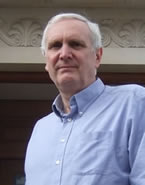Council Encourages Flightpath Variations To Ease Noise Impact For Locals
New technology could reduce noise burden
In its response to a Civil Aviation Authority (CAA) consultation on future airspace strategy the council said that developments in air traffic control technologies create opportunities for Heathrow approaches to be varied. This could give relief to overflown communities.
New technology could enable take off and arrival routes to become more concentrated on narrow centre lines. This means that aircraft would always fly directly over the same properties. However the same technology could be used to give people respite by allocating more than one route in the same area, where this would not create a safety issue.
 Council leader Edward Lister said:
Council leader Edward Lister said:
“The problem with the CAA is that it makes no attempt to assess the overall noise impact of airspace changes. This means that advances in technology are seen as a way of squeezing in more aircraft rather than reducing environmental impacts.
“This is an important quality of life issue on which the people most affected by aircraft noise should have their say. Respite routes could be one way of easing the burden for people in places like Wandsworth and Putney. We think the Transport Department and the CAA should be doing much more to make people aware of the potential offered by navigational advances.”
The CAA consultation sets out the basis for a future airspace strategy that would have the capacity to meet demand and balance the needs of users while mitigating the environmental impact.
Likely changes include measures to move Heathrow’s four holding stacks further out of the capital where they would be higher in the sky. This would reduce noise over the city.
Further consultation on the detail of airspace changes affecting areas including south and west London is expected between 2011 and 2017.
In its response the council warns that the CAA’s proposals assume a near-doubling of UK air traffic with no indication where new airport capacity will be provided.
The council is also concerned that the CAA continues to rely on out of date guidance on noise – basing this on a survey carried out almost 30 years ago and ignoring more recent evidence provides by the Attitudes to Aircraft Noise in England (ANASE) study. This found that people become significantly annoyed by noise at much lower levels than previously thought.
The council also repeats its call for key decisions on airspace to be taken by the Transport Secretary rather than an unaccountable body like the CAA.
The Development of Future Airspace Strategy consultation is available at www.caa.co.uk The council’s response was considered by councillors at the finance and corporate resources overview and scrutiny committee on January 19. It can be viewed at www.wandsworth.gov.uk/moderngov
January 20, 2011
Related links
|